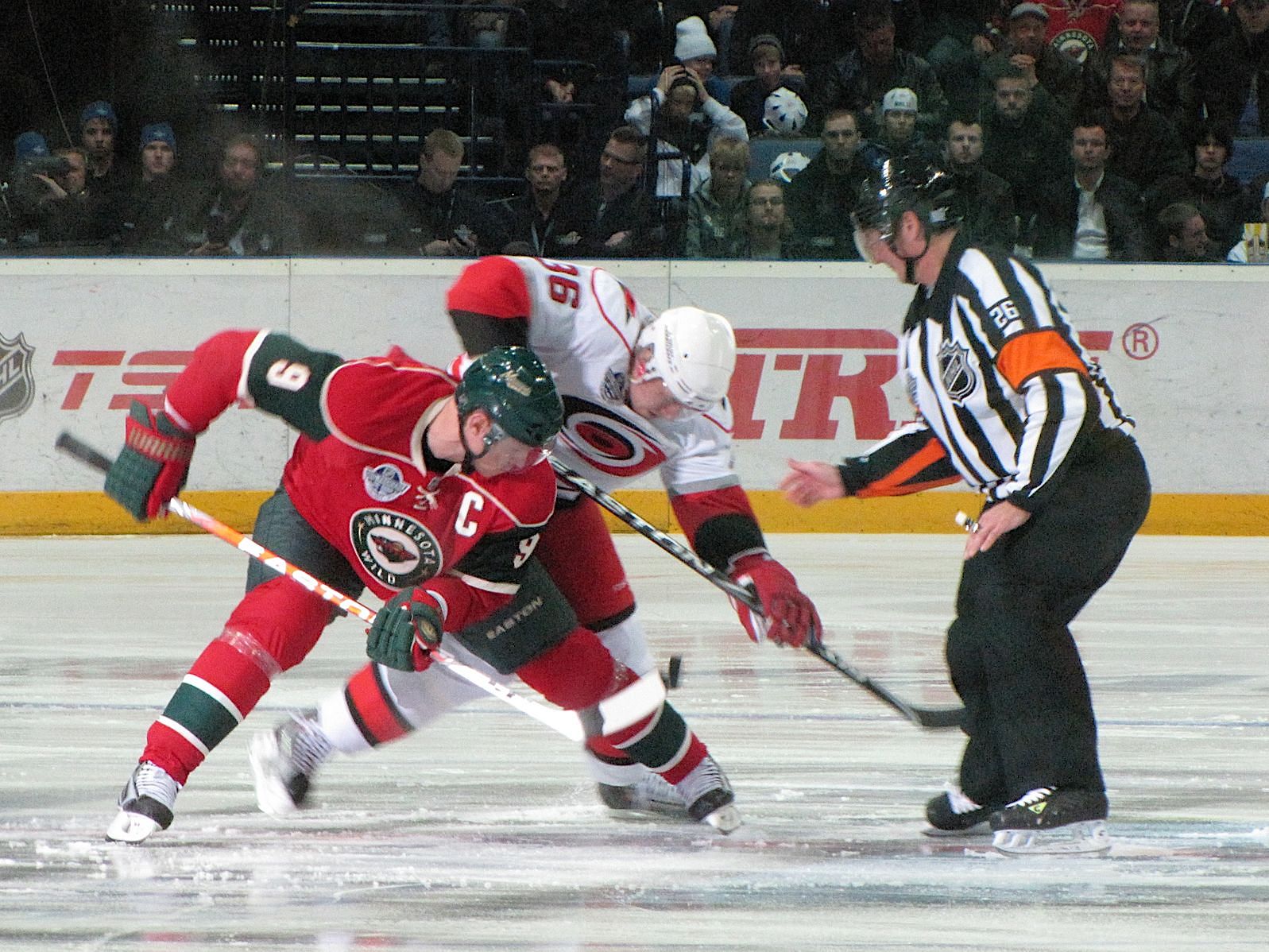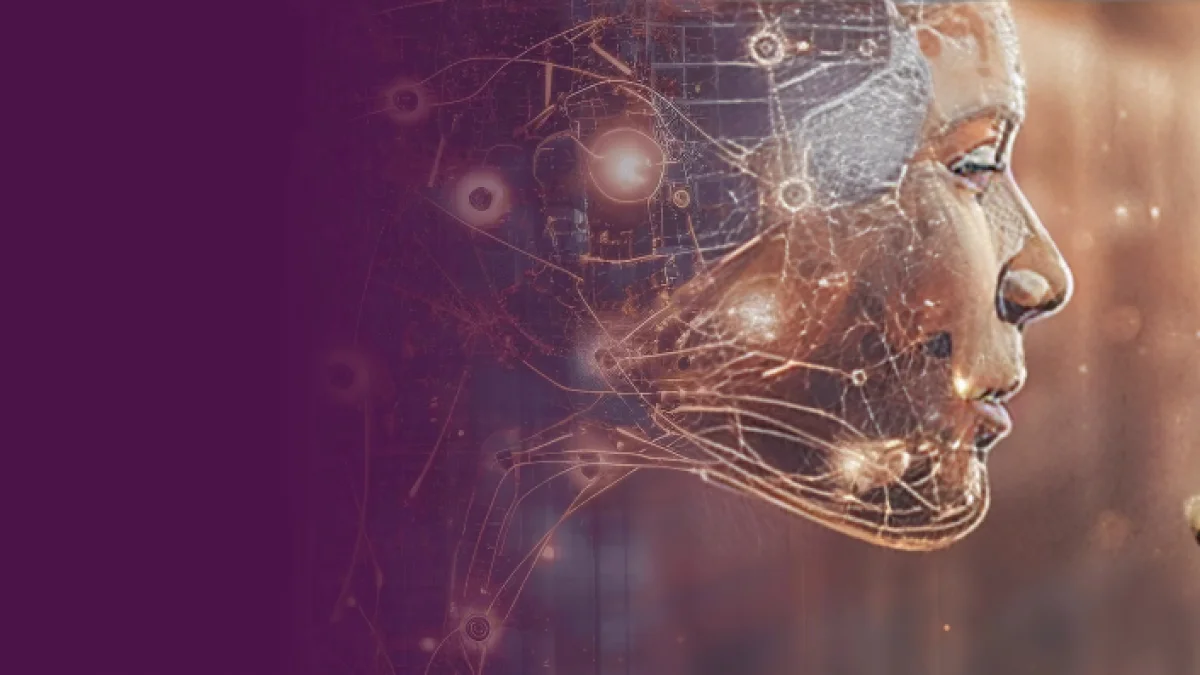
The National Hockey League and Amazon Web Services Inc. are working together to change how hockey is experienced, leveraging cloud technologies and data-driven insights to enhance production workflows and fan engagement.
At AWS re:Invent last week, representatives from both organizations joined a panel titled “NHL Unlocked: Live cloud production, sports data, and alternate feeds.” The panelists were Julie Souza, global head of sports for AWS; Grant Nodine, senior vice president of technology for the NHL; Brant Berglund, senior director of coaching and GM applications for the NHL; and Andrew Reich, senior industry specialist, BD, for AWS. They discussed their progress across a range of issues.
Souza opened the discussion by emphasizing the importance of collaboration in the partnership. “AWS isn’t just a tech vendor,” she said. “We’re working alongside the NHL to explore what’s possible and deliver real value to fans and the league.”
Souza said their shared commitment to innovation has been central to their progress, including advancements in live cloud production and analytics-driven storytelling.
This sentiment of “partner versus vendor” has been a consistent theme in my discussions with other sports entities. The PGA TOUR, Swimming Australia, the NFL and others have told me the AWS team actively gets involved in helping them consider what’s possible and bringing new ideas to the table.
Building a foundation for innovation
Nodine traced the journey to the league’s initial efforts to transition its video content to the cloud. This foundational step enabled automating processes such as encoding and scheduling, which are now critical to their operations. “You can’t do the exciting stuff,” Nodine noted, “until you’ve built the basics.”
Reich elaborated on the architecture supporting this transformation. Using AWS Elemental MediaConnect, the NHL created a streamlined pipeline for video ingest, storage and distribution. This setup makes nightly game broadcasts efficient and positions the league to experiment with new forms of content delivery.
Making sense of the data
The NHL’s adoption of player- and puck-tracking systems has unlocked unprecedented insights into the game. These systems collect billions of data points during a single night of games.
Berglund emphasized how this data helps deepen understanding for fans. “It’s not just about collecting stats,” he said. “It’s about turning that data into meaningful stories.”
One example is Ice Tilt, a period of play in which one team dominates possession and offensive pressure, pinning its opponents in the defensive zone and generating sustained momentum.
Berglund said he once asked player Jack Hughes how he recognizes momentum shifts during games. Hughes described it as “tilting the ice.” This once informal concept is now quantified and aligns with the NHL’s use of player positioning data to measure territorial momentum, turning the metaphor into a precise, trackable metric.
Reaching new audiences
Alternate broadcasts, such as the NHL Edge DataCast, showcase the league’s ability to tailor content to different audiences. The Big City Greens Classic, which adapted NHL games for a younger, animation-loving demographic, demonstrated the potential for these efforts. Souza noted that these initiatives are helping the NHL reach audiences who might not traditionally watch hockey. “By meeting fans where they are, we can make the game accessible to more people in ways that resonate with them,” Nodine added.
The league also creatively uses analytics, such as face-off probability, which calculates matchups and success rates in real time. This feature not only enriches broadcasts but also enables commentators to explore the nuances of gameplay more deeply.
A shift to live cloud production
In March 2023, the NHL reached a major milestone: It became the first North American league to produce and distribute a game entirely in the cloud.
Nodine recounted how this effort involved routing all camera feeds to the cloud for production by remote teams. The approach also promoted sustainable production practices by significantly reducing carbon emissions. “We’re not turning back,” Nodine said, citing both operational flexibility and environmental benefits as reasons to continue this path.
Reich highlighted how cloud-based workflows enable the league to experiment in ways traditional setups cannot. For example, by centralizing video feeds in the cloud, the NHL can produce alternate broadcasts or deliver content directly to fans in the arena through mobile devices.
The NHL deserves significant credit for using the cloud to produce games, as it was the first league to make the shift. For sports entities, production quality is obviously critical, as that’s how most fans engage with the brand. Before the NHL, most sports organizations were skeptical that the cloud could deliver comparable quality to producing the game on-premises. The NHL’s success leads to other leagues, such as the PGA TOUR and NFL, producing events in the cloud, but the NHL has the distinction of being first.
What’s next
As the NHL and AWS reflect on their progress, they are also exploring what’s next. Nodine pointed to opportunities in using artificial intelligence to streamline highlight generation and provide real-time insights for broadcasters. By automating some workflows, broadcasters could focus on storytelling, while fans could gain deeper insights into the game’s dynamics.
Alternate broadcasts remain a fertile ground for experimentation. Projects such as Big City Greens and NHL Edge DataCast have shown how targeted content can reach new audiences, and the technology behind these initiatives could inform traditional broadcasts in the future. For example, integrating metrics such as time on ice or Ice Tilt directly into standard broadcasts could provide fans with richer narratives without disrupting the viewing experience.
Souza summarized the approach as follows: “This is about thoughtful progress — identifying what works, refining it and integrating it in ways that enhance the game for everyone.” As the partnership evolves, the focus remains on making hockey more engaging, accessible, and dynamic for a global audience.
Some final thoughts
If you love hockey like I do (I’m Canadian, so I’m mandated to love hockey), you support any efforts to improve the fan experience. What I like most about the collaboration between the NHL and AWS is it helps casual fans better understand the game. It’s been said that AI lets the untrained eye see what the trained eye does, and features that highlight specific nuances can accelerate the learning of a game that can be confusing to non-hard-core fans.
Now, if only the Canucks can hold on until Stanley Cup playoff time.
Zeus Kerravala is a principal analyst at ZK Research, a division of Kerravala Consulting. He wrote this article for SiliconANGLE.
Photo: Wikimedia Commons
Your vote of support is important to us and it helps us keep the content FREE.
One click below supports our mission to provide free, deep, and relevant content.
Join our community on YouTube
Join the community that includes more than 15,000 #CubeAlumni experts, including Amazon.com CEO Andy Jassy, Dell Technologies founder and CEO Michael Dell, Intel CEO Pat Gelsinger, and many more luminaries and experts.
THANK YOU








Leave a Comment